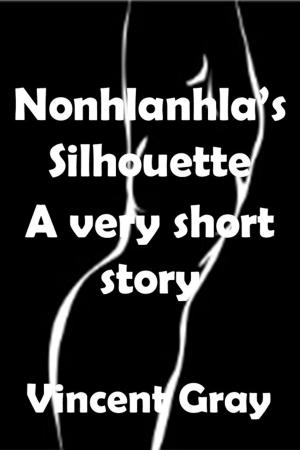| Author: | Vincent Gray | ISBN: | 9781370314690 |
| Publisher: | Vincent Gray | Publication: | November 3, 2017 |
| Imprint: | Smashwords Edition | Language: | English |
| Author: | Vincent Gray |
| ISBN: | 9781370314690 |
| Publisher: | Vincent Gray |
| Publication: | November 3, 2017 |
| Imprint: | Smashwords Edition |
| Language: | English |
Literary post-mortem of the 'Raghavee' novella . On the surface this a remarkably simple love story - but this is a deception! This novella is also in a way a sister story to my 'Waterlandsridge'. They are both 'poetic narratives',
For those who are interested in reading ‘Raghavee – The Immoral House Keeper’ I have the following comments to make. The writing of ‘Raghavee – The Immoral House Keeper’ and its publication as an ebook on Smashwords represents the convergence of multiple themes into a single unified narrative. Formally the story begins with a scene setting prologue and it ends with a wrapping up epilogue with a lot of stuff happing in between. In between the prologue and the epilogue we have the unfolding of dramatic events interwoven with irony, paradox, dilemmas, dialectics, parable, morality play, the oneiric and much more. It has a plot which gives structure and coherence to the story. None of this was intentionally planned in a formulaic fashion. No formula or guidelines or rules of creative writing were followed in the creation of ‘Raghavee’. This makes the story or tale of Raghavee something that is literary and aesthetically speaking a work greater than the sum of its part. In this sense ‘Raghavee’ is a work of literature and not pulp fiction. How did ‘Raghavee’ happen? I don’t know. I did not followi any novel writing rules. I did not apply or follow any creative writing guidelines. ‘Raghavee’ just happened – it was written from the gut. What do I mean by that? It was written instinctively. Writing or literary creation as a work of art has to be an experimental and experiential exercise, which also involves an exploration into the power of words and symbols to capture mood and dramatic intensity. ‘Raghavee’ as an experiment in literary form has roots in modernism but without the modernist metaphysic. It has its own metaphysic. ‘Raghavee’ is a work of literary realism in the sense that it takes a non-relativistic stand with regard to making claims about the nature of things including the meaning and experience of love between humans. This is what makes it different to ‘conventional’ forms of modernism and post-modernism. 'Raghavee' is an example of what I would class in literary and aesthetic sense as struggle writing in the context of Anarcho-Communism. It is about transgression and revolution. It is committed to the anti-colonial literary project in an African context.
Literary post-mortem of the 'Raghavee' novella . On the surface this a remarkably simple love story - but this is a deception! This novella is also in a way a sister story to my 'Waterlandsridge'. They are both 'poetic narratives',
For those who are interested in reading ‘Raghavee – The Immoral House Keeper’ I have the following comments to make. The writing of ‘Raghavee – The Immoral House Keeper’ and its publication as an ebook on Smashwords represents the convergence of multiple themes into a single unified narrative. Formally the story begins with a scene setting prologue and it ends with a wrapping up epilogue with a lot of stuff happing in between. In between the prologue and the epilogue we have the unfolding of dramatic events interwoven with irony, paradox, dilemmas, dialectics, parable, morality play, the oneiric and much more. It has a plot which gives structure and coherence to the story. None of this was intentionally planned in a formulaic fashion. No formula or guidelines or rules of creative writing were followed in the creation of ‘Raghavee’. This makes the story or tale of Raghavee something that is literary and aesthetically speaking a work greater than the sum of its part. In this sense ‘Raghavee’ is a work of literature and not pulp fiction. How did ‘Raghavee’ happen? I don’t know. I did not followi any novel writing rules. I did not apply or follow any creative writing guidelines. ‘Raghavee’ just happened – it was written from the gut. What do I mean by that? It was written instinctively. Writing or literary creation as a work of art has to be an experimental and experiential exercise, which also involves an exploration into the power of words and symbols to capture mood and dramatic intensity. ‘Raghavee’ as an experiment in literary form has roots in modernism but without the modernist metaphysic. It has its own metaphysic. ‘Raghavee’ is a work of literary realism in the sense that it takes a non-relativistic stand with regard to making claims about the nature of things including the meaning and experience of love between humans. This is what makes it different to ‘conventional’ forms of modernism and post-modernism. 'Raghavee' is an example of what I would class in literary and aesthetic sense as struggle writing in the context of Anarcho-Communism. It is about transgression and revolution. It is committed to the anti-colonial literary project in an African context.















